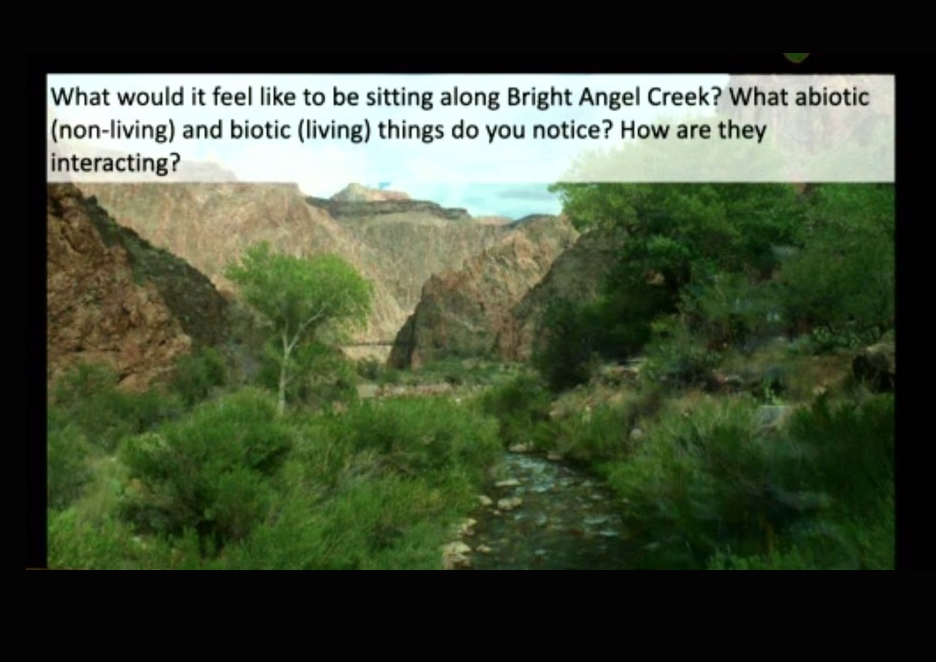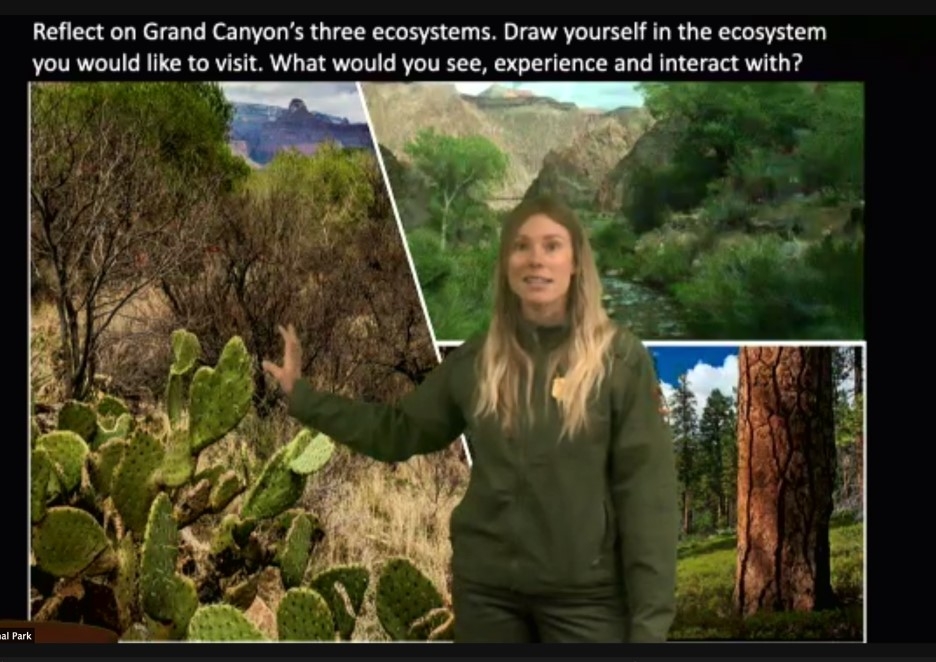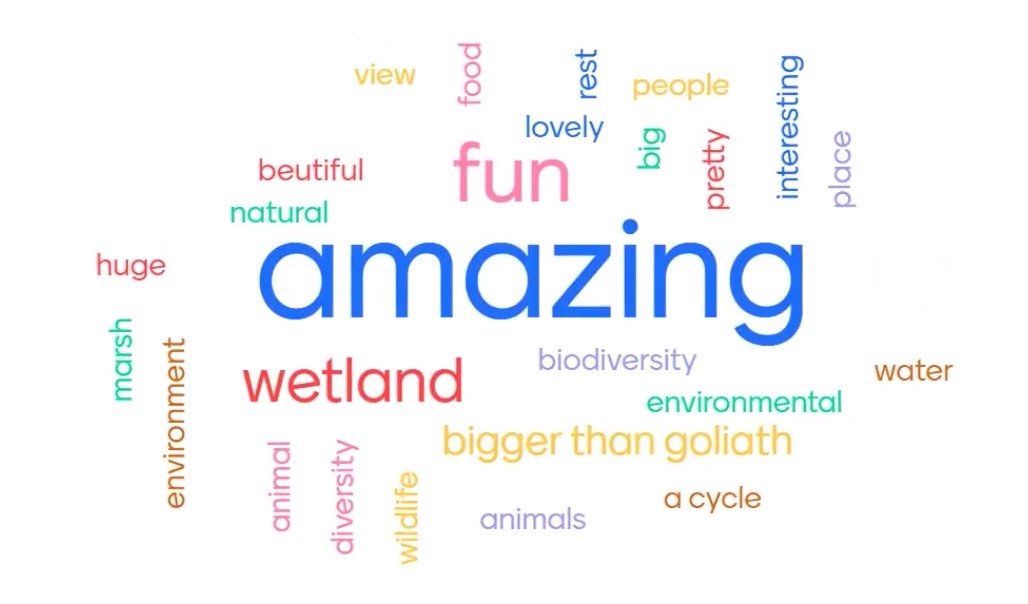Place-based
What is place-based? The educator uses and emphasizes the unique attributes of a place with an aim of helping students develop attachment to and new understandings of that place.
What does it look like in practice? An educator may share videos, photos or live feeds that highlight features of a particular place. They may ask questions that prompt students to imagine themselves in or describe the place, helping them to develop understanding about and connection with that place.
Grand Canyon National Park Canyon Connections program
The
Canyon Connections program for 5th-8th grade students explores three
ecosystems within the Grand Canyon National Park. Students learn through
lectures and video clips, and engage with the educator through drawing,
writing and discussions.
The educator shares photos and video clips of places and objects in the park, and then asks questions that help students imagine themselves in some of these places.
Bright Angel Creek

Grand Canyon's three ecosystems

This place-based program helps students connect to this place by sharing information and images of the biotic and abiotic things that can be found there, and then asking students to draw themselves there and imagine what it would be like.
Kansas Wetland Education Center
The Wetlands Metaphor program is a synchronous virtual program designed for middle school students. This program lasts for 70 minutes and emphasizes the importance of wetlands for migratory birds. It includes some content delivery through videos and slides along with discussion, polls and Jamboard activities.
The educator utilizes several clips from this video to teach about the organisms that inhabit Cheyenne Bottoms, which is the largest wetland in the interior United States. Following compelling close-up and wide-angle videos of wildlife and water, she uses Google Earth to zoom into Cheyenne Bottoms Preserve. Natural sounds, images, and video clips help situate viewers in the wetland.
Later, the educator shares a satellite image to give students a bird’s eye view of the area, to illustrate that there are not many bodies of water in Kansas, and how the 41,000 acres stands out like a target for birds as they fly overhead.
Bird’s eye view map




